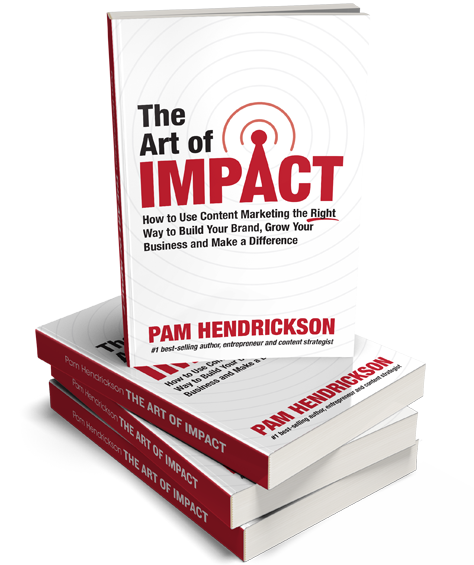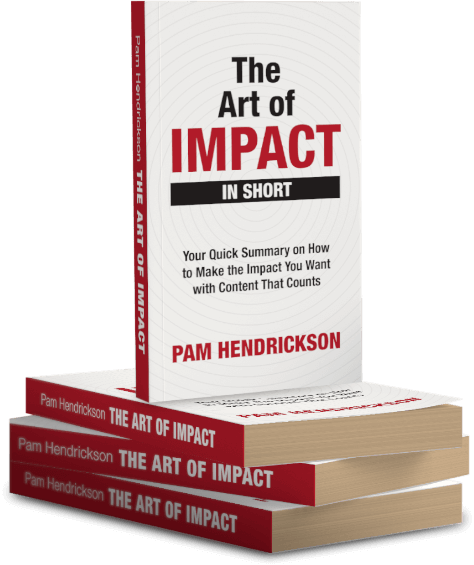Perspective is a great thing. My husband and I just finished an intense four-month push to launch our new product and business (Make, Market, Launch IT). In my last post, I shared my biggest mindset lessons. Now, I want to share some distinctions around the business side of things – and where the biggest points of leverage are for you.
First of all, information product/online marketing industry is a crazy one. Those of us in the industry are so conditioned to think, and even expect, that a new product launch will do millions of dollars in revenue. (And that a launch is a failure if it doesn’t!)
Hopefully by now, you are well aware that the margins don’t play out the way we’re often led to believe, and that even the gross revenue numbers aren’t what they used to be just a few years ago. For a variety of reasons, it’s just harder to make money in today’s market – but it’s still possible.
To me, this is a good thing. Making money in today’s online world requires better business discipline, sound marketing and sales execution, and quality products and services that really do solve a problem for their target markets. It also requires doing the right thing for your customers consistently.
For those who have these things, it’s an incredible competitive advantage!
And, because the market requires us to do things the right way, we’re all primed to succeed in any market condition.
So as I think about the biggest business lessons of the last four months, I put it in this context: Are we running our business based on good practices? Are we measuring my results to maximize the most effective levers in our businesses? Is our execution based on solid marketing logic and detailed metrics?
In other words, it all boils down to these five keys:
1. The process doesn’t end when you launch your product or service to the market.
That’s when it begins. To think that you’ve done all this work to get your product done and you can now sit back and watch the money come in, is naïve at best. Marketing is science: You have a hypothesis, you test it, you measure the results and then you change your approach based on the results. You can only begin the process of maximizing your marketing when you go to market.
2. Know your numbers: You need to understand the right statistics to monitor.
What are the core metrics that give you a picture of the overall health of your business? It’s easy to drive yourself crazy with meaningless statistics if you aren’t clear what matters and what doesn’t up front.
Eric Ries’ book, The Lean Start-Up, distinguishes vanity metrics and actionable metrics. Vanity metrics feel good but don’t give you any information about what to do next. Actionable metrics tie specific, repeatable actions to a result – i.e., they help you understand the impact of taking a certain action, thereby giving you information about whether you should do more or less of that action in the future.
So where do you start? Here’s my take on metrics that matter, divided by channel:
Website:
- Unique Visitors/Traffic to Website
- Opt-In Rate = Traffic to Website ÷ Number of Opt-Ins
- Cost of Lead Acquisition = Total Marketing Cost ÷ Number of Leads
- Average Value Per Visitor = Conversion Rate x Price of Product
- Gross Revenue (raw sales income) = Number of Products Sold x Price of Product (Your metrics don’t mean anything if you’re not ultimately bringing enough money in the door.)
- Refund Rate = Number of refunds ÷ Number of purchases
Individual Emails:
- Open Rate: Did your subscribers open your email to read it? This is directly related to your subject line.
- Click-Through Rate: Did your subscribers clink on the link in the body of your email? This is directly affected by your body copy. (Note: You want to be looking at the Unique Click-Through which measures how many different people clicked on a link in your email.)
- Conversion Rate: Did your click-throughs purchase your product? This is directly related to your offer.
Paid Advertising/Purchased Traffic:
- Cost Per Click (CPC): Refers to ads purchased on a per-click basis. Total Cost = Cost Per Click x Number of Clicks. This is as opposed to…
- Cost Per Thousand (CPM): Refers advertising bought on the basis of impressions. Total Cost = CPM Rate (what the advertiser is charging for 1,000 impressions) x Number of Units (i.e. – if you want to reach 2,000 people, the Unit number is 2.)
Overall Email Deliverability & Branding:
- Inbox Delivery: Are your emails actually getting through to prospect’s inboxes?
- Complaint Rate: Are your customers actively clicking a link to report your emails as junk or spam?
- Active List Size: It’s not about the total number of subscribers on your list; it’s more important to know how many of these people on your list are active and responsive.
- Bounces (Hard vs. Soft): The standard rule of thumb here is to remove people from your list after one hard bounce, or after 3-5 soft bounces.
- Unsubscribes: How many people unsubscribed from your email campaign as a direct result of your email? This is not as actionable as your other statistics, however, it is good to monitor to make sure you aren’t seeing any spikes, etc.
Here’s an example of why these metrics are important: If your lead capture page (also called your “squeeze page”) is converting at 30% (meaning 300 out of 1,000 people who come to your web page choose to opt-in) and you can increase this to 40% by making a few changes to the page, this means you’re now getting 400 people to opt in out of 1,000—an extra 100 people per 1,000 visitors.
If 10% of the additional people who opt in ultimately buy your product or service, this is the difference of 10 sales of your product or service! In short, testing your website to increase your conversion on your opt-in page has a direct impact on your bottom line revenue.
Here’s another example of how knowing your metrics affects your bottom line. If it’s costing you $1.50 to bring a lead into your funnel and you find a way to reduce this to $1 per lead, you can instantly boost your profits. To illustrate: 1,000 leads will cost you $1,000 vs. $1,500, increasing your profit by $500.
During our product launch of Make, Market, Launch IT, we did a split test between two separate opt-in/squeeze pages. By doing this, we learned that one of our pages converted at 17.5% higher rate than the original. Of course, we then stopped using the original squeeze page and only used the one that converted the highest. It was the cleaner, simpler page that converted better:

Had we not been monitoring our metrics, though, we never would have known.
3. Change your approach based on your results.
As you learn what works and what doesn’t in your business, the obvious solution is to do more of what gives you the best result and to stop doing what isn’t converting for you. I know this sounds incredibly simple, but it’s amazing to me how many people fail to follow this advice.
There’s only one caveat: make sure that you only test one thing at a time. Otherwise, you don’t know what, specifically, is producing your results. Also, rather than driving yourself crazy trying to measure every last thing, focus on the 3-5 metrics that matter most and maximize them.
The key is to keep making these incremental improvements through time to your business. They will add up to a substantial increase in your results sooner than you think.
4. Do a periodic leak detection audit.
Go through your entire process as a customer from beginning to end. Look at every touch point and determine where you’re losing opportunities to get value. Where in the process are you losing customers? Where you can maximize your returns?
5. Based on your numbers, push the appropriate levers to drive marketing and sales.
It’s so easy to get caught up in the “doing,” and lose the forest for the trees when running your business. If you can keep a high-level view, and measure the things that bring you the greatest results—and the greatest joy – in your business, you’ll not only make significant progress, but you’ll fulfill your true mission of why you got into business in the first place.
Looking back on our launch, it’s easy to see the things we’ll do differently the next time around. (I’m sure we’ll say the same thing every time we launch a new program.)
My greatest vision for this industry is that each product or program that’s released is better than the one that came before it.
Thank you for being part of this mission to create outstanding products and services that make a difference in our customers’ lives.
Let’s continue to advance our industry – together.




The idea of a leak detection audit intrigues me. For a continuity business like mine, that could be a really valuable concept. Can you post more suggestions for this audit?
Thanks,
Joe 😀
Pam what a fascinating and thorough write-up! Thanks for the transparency, and taking us along on your journey.
Hi Pam,
I notice that when you have a product for sale you offer only a 15 day money back guarantee. Why not the industry standard 30 day money back guarantee?
Jason
PS I’d love to try your products but I don’t trust your super short period of only 15 days.
Hey Jason, it depends on the product. I go anywhere from 7 days to 30 days or more depending on the context. In the case of this program, 15 days is more than enough time to evaluate it and start to implement it. Thanks for asking!
I use this strategy for my aerial photography business. Nice write up. You can check out some of the squeeze pages here: http://schadt.com Thanks!